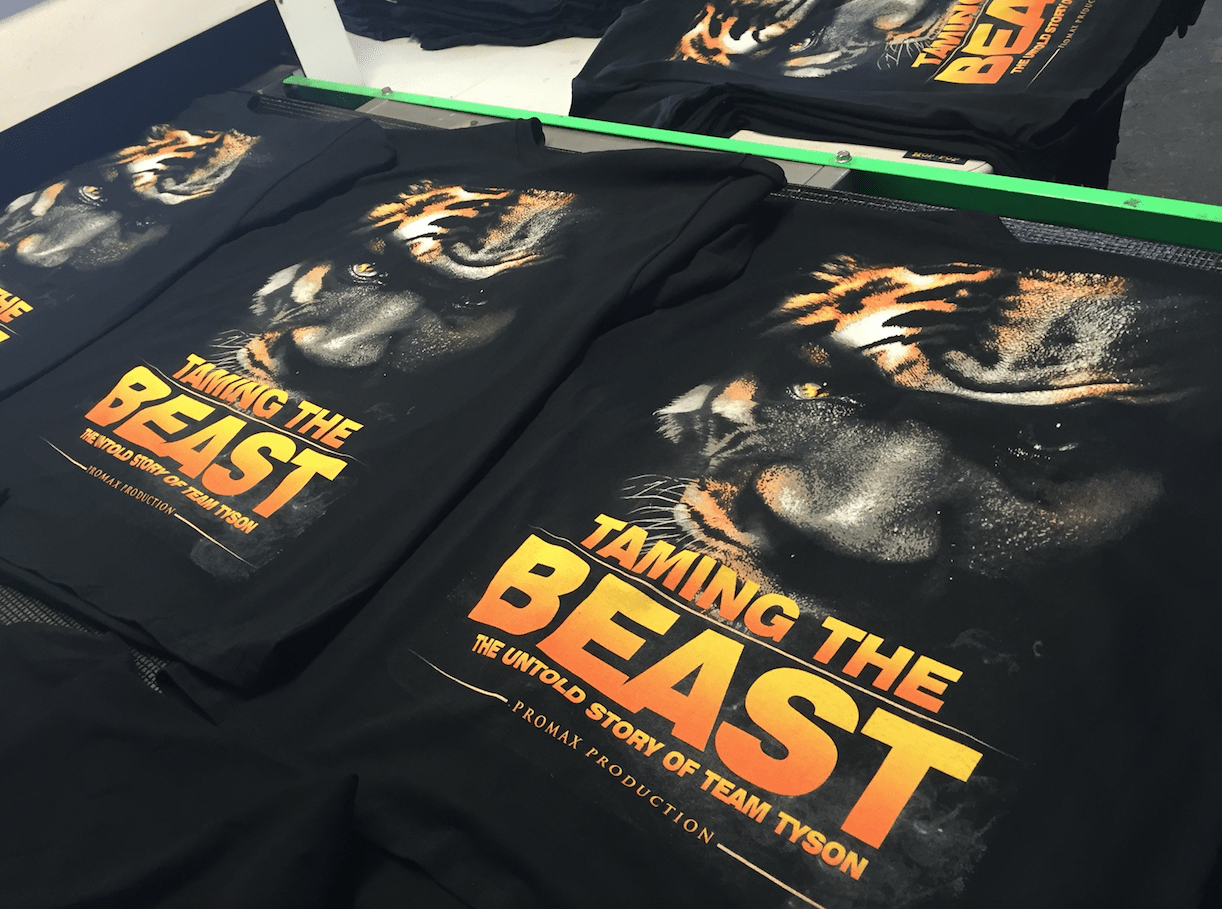Custom Screen Printing for Unique Promotional Merchandise
Custom Screen Printing for Unique Promotional Merchandise
Blog Article
Display Printing Uncovered: Every Little Thing You Required to Understand About T-Shirt and Garment Printing Strategies
If you have actually ever before wondered exactly how those lively designs finish up on your preferred tees, you remain in the best location. Display printing is a remarkable technique that combines art with technique, supplying countless opportunities for creative thinking. Comprehending the fundamentals, from devices to ink options, can significantly impact your outcomes. Prepared to discover the essential components that make screen printing an art kind? Let's reveal the information that can boost your projects.
The Basics of Display Printing: How It Functions
When you dive right into screen printing, you'll uncover it's both a scientific research and an art. At its core, screen printing includes creating a pattern, or screen, that enables ink to pass through only in certain locations.
Following, you'll blend your inks and prepare your printing surface area. Placement the display over the fabric, then make use of a squeegee to press ink through the screen onto the garment. This procedure calls for accuracy, as you desire clear, vivid prints. After printing, you'll treat the ink with warmth, guaranteeing it abides by the material and lasts with washes. Each action is vital, and grasping them will certainly boost your screen printing abilities, changing simple garments into one-of-a-kind, meaningful items.
Sorts Of Screen Printing Methods
When you understand the fundamentals of display printing, it's time to check out the different methods that can boost your styles. One popular approach is traditional display printing, where ink is pressed through a stenciled screen. This strategy is fantastic for bold, vivid shades. After that there's water-based ink printing, which uses a softer feel and is eco-friendly, however it calls for a different strategy to healing.
If you're aiming for great information, think about discharge printing. This technique eliminates color from the fabric, leaving a soft, classic appearance. An additional option is plastisol printing, recognized for its longevity and brilliant colors, making it a preferred for lots of brands. Ultimately, experiment with halftone printing to create gradient effects and intricate layouts. Each strategy has its special beauty, so don't be reluctant to attempt them out to locate what suits your design best!
Crucial Devices for Screen Printing
To attain spectacular outcomes in screen printing, having the right tools is fundamental. You'll require a durable display printing frame, which holds the mesh that transfers your style onto the garment. Next, purchase top quality squeegees; these are necessary for applying ink equally throughout the display. You'll likewise require a good exposure system to produce your screens, as well as a washout booth for cleaning them after usage. A trustworthy warmth resource, like a conveyor dryer or heat press, is critical for healing your prints to guarantee longevity. Do not forget a proper work area, furnished with tables and storage for your supplies. Finally, protective equipment, such as masks and gloves, will certainly maintain you risk-free from chemicals and inks. With the right devices, you'll be well on your way to producing professional-quality prints.
Choosing the Right Inks and Products
When picking inks and products for screen printing, you require to take into consideration the kind of ink that works best for your task. Assume about textile compatibility to ensure your layouts look great and last long. Also, discover environment-friendly ink options to make your printing procedure more lasting.
Kinds of Display Inks
Choosing the appropriate display ink is vital for achieving lively, durable prints that fulfill your job's requirements. There are a number of kinds of display inks to take a look at. Plastisol ink is popular for its convenience and simplicity of usage, giving outstanding shade opacity on dark textiles. Water-based ink, on the various other hand, supplies a softer feel and is green, making it excellent for those seeking to reduce their environmental effect. Discharge inks remove color from the textile, leading to a soft, vintage appearance yet need particular handling. Ultimately, specialized inks, such as glow-in-the-dark or metal, can add distinct effects to your styles. Evaluate your task needs and pick the ink that lines up finest with your preferred outcome.

Material Compatibility Factors To Consider
Understanding fabric compatibility is important for achieving high-quality display prints, especially considering that different materials respond uniquely to numerous inks. Constantly test your inks on example material to assure they stick appropriately and preserve color honesty. Additionally, keep in mind that fabric weight and structure can impact the final result, so picking the best ink and product combination is crucial for your task's success.
Eco-Friendly Ink Options
Environment-friendly inks are becoming a preferred choice for display printers that desire to decrease their ecological effect while preserving top quality. When selecting inks, take into consideration water-based inks, which are less damaging and simpler to tidy up contrasted to traditional solvents. These inks bond well with materials, providing vivid results without toxic chemicals. You may additionally check out eco-solvent inks that use fewer unstable organic substances (VOCs), making them a much safer alternative for both your wellness and the earth.
In addition, look for inks made from renewable energies, such as soy or vegetable-based options. By choosing the ideal inks and materials, you'll not just produce magnificent designs however also moved here add to a more lasting printing procedure. Make the button, and your prints will certainly show your dedication to the environment!
Preparing Your Layout for Display Printing

File Layout Needs
To guarantee your style looks lively and sharp on material, you'll need to pay close focus to submit format requirements for screen printing. Make certain your layout has a transparent background to protect against undesirable white edges on your prints. Maintain shade modes in mind; CMYK is typical for screen printing, so transform your RGB makes appropriately.
Shade Separation Methods
Shade separation is an essential action in preparing your layout for display printing, and understanding it can considerably boost your print quality. You'll require to damage your design into specific shades, as each color needs a separate display throughout printing. Start by recognizing all the colors in your design and produce layers for each one. You can use software program like Adobe Photoshop or Illustrator to isolate and different colors effectively. Be certain to save each layer as a separate data, normally in a style like TIFF or PSD. This precision not only assures exact shade representation yet likewise improves the printing process. By taking notice of color splitting up, you'll achieve vivid and professional cause your screen-printed garments.
Resolution and Size
Achieving the most effective results in display printing starts with assuring your design has the right resolution and size. Ideally, your art work ought to be at least 300 DPI (dots per inch) for sharp, clear prints. Your last product could look pixelated and pop over to this web-site amateur. if you use lower resolution.
When it pertains to size, consider the dimensions of your print location. Design your art work to match the final print size, preferably producing it in the actual measurements you'll be publishing. This way, you'll stay clear of any unforeseen scaling issues.
Always examine your design in both vector and raster styles. Vector graphics can be scaled without shedding top quality, making them optimal for screen printing. Preparing appropriately will guarantee your design looks remarkable on every garment!
Step-by-Step Screen Printing Refine
Display printing is a dynamic process that permits you to create vibrant designs on various surfaces. To get begun, you'll require a display, solution, and your selected ink.
After cleaning out the unexposed solution, your screen is ready. Establish it up on your printing surface area and straighten your garment under it. Pour ink onto the screen and make use of a squeegee to press the ink through the pattern onto the fabric. Raise the display very carefully and let the print dry. Treat the ink using warmth to guarantee sturdiness. That's it! You've effectively display printed your layout.
Tips for Effective Screen Printing Projects
While you're diving right into your screen printing jobs, bear in mind that preparation is essential to success. Beginning by collecting all your products-- inks, garments, mops, and screens. A tidy work space assists stop undesirable errors, so neat up before you start.
Next, validate your art work is high-resolution and properly sized for your garment. Examine your screen for appropriate exposure and tidy it thoroughly to prevent spots. When blending your inks, comply with the manufacturer's standards to accomplish the best uniformity.
During printing, apply also stress with your squeegee for regular results. Do not rush; take your time to confirm each print meets your requirements. After printing, allow your garments completely dry completely before dealing with or packaging them.
Finally, always keep a sample of your benefit future recommendation. In this manner, you can evaluate your development and boost your strategies over time. Pleased printing!

Frequently Asked Concerns
How much time Does It Require To Establish a Display Printing Work?
Setting up a display printing task normally takes about 30 mins to an hour. You'll prepare the displays, mix inks, and adjust journalism. The moment differs based on intricacy and experience, so remain organized!
Can I Print on Various Material Keys In Utilizing the Same Strategy?
Yes, you can publish on different textile kinds making use of the exact same strategy, however you'll require to readjust your inks and settings. Some fabrics soak up ink in a different way, so experimenting assurances the best results for each material.
What Prevail Mistakes to Avoid in Display Printing?
When display printing, prevent usual mistakes like utilizing the incorrect ink, neglecting correct exposure times, or skipping pre-press checks. Constantly check your arrangement and preserve clean displays to guarantee quality outcomes each time.
Just How Can I Appropriately Clean and Preserve My Screen Printing Equipment?
To effectively tidy and preserve your screen printing equipment, you should frequently wash displays with ideal solvents, check mops for wear, and assure all devices are saved completely dry and dust-free. Uniformity protects against pricey repair services and improves performance.
Is Display Printing Ecologically Pleasant Compared to Various Other Approaches?
Display printing can be a lot more environmentally pleasant than various other methods, specifically if you utilize water-based inks and eco-conscious materials. By selecting sustainable materials and techniques, you minimize waste and reduce your effect on the earth.
Screen Printing Uncovered: Every Little Thing You Required to Know Regarding T-Shirt and Garment Printing Strategies
At its core, screen printing involves creating a stencil, or screen, that permits ink to pass via only in specific locations. Setting the screen over the material, after that use a squeegee to push ink via the display onto the garment. One popular method is standard display printing, where ink is pushed with a stenciled screen.When choosing inks and products for screen printing, you require to take right into account the kind of ink that functions ideal for your job.
Report this page